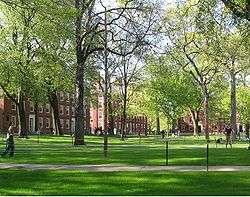Harvard University
Harvard University is a private Ivy League research university in Cambridge, Massachusetts. Established in 1636 and named for its first benefactor, clergyman John Harvard, Harvard is the oldest institution of higher learning in the United States[6] and among the most prestigious in the world.[7]
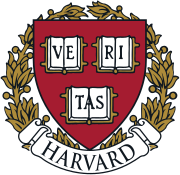 | |
| Latin: Universitas Harvardiana | |
Former names | Harvard College |
|---|---|
| Motto | Veritas[1] |
Motto in English | Truth |
| Type | Private nonprofit university |
| Established | 1636[2] |
| Endowment | $40.9 billion (2019)[3] |
| President | Lawrence Bacow |
Academic staff | ~2,400 faculty members (and >10,400 academic appointments in affiliated teaching hospitals)[4] |
| Students | 20,970 (Fall 2019)[5] |
| Undergraduates | 6,755 (Fall 2019)[5] |
| Postgraduates | 14,215 (Fall 2019)[5] |
| Location | , , United States 42°22′28″N 71°07′01″W |
| Campus | Urban 209 acres (85 ha) |
| Newspaper | The Harvard Crimson |
| Colors | Crimson[4] |
| Athletics | NCAA Division I – Ivy League |
| Nickname | Harvard Crimson |
| Affiliations | NAICU AICUM AAU URA |
| Website | harvard |
 | |
The Massachusetts colonial legislature, the General Court, authorized Harvard's founding. In its early years, Harvard College primarily trained Congregational and Unitarian clergy, although it has never been formally affiliated with any denomination. Its curriculum and student body were gradually secularized during the 18th century, and by the 19th century, Harvard had emerged as the central cultural establishment among Boston elites.[8][9] Following the American Civil War, President Charles William Eliot's long tenure (1869–1909) transformed the college and affiliated professional schools into a modern research university; Harvard became a founding member of the Association of American Universities in 1900.[10] James B. Conant led the university through the Great Depression and World War II; he liberalized admissions after the war.
The university is composed of ten academic faculties plus the Radcliffe Institute for Advanced Study. Arts and Sciences offers study in a wide range of academic disciplines for undergraduates and for graduates, while the other faculties offer only graduate degrees, mostly professional. Harvard has three main campuses:[11] the 209-acre (85 ha) Cambridge campus centered on Harvard Yard; an adjoining campus immediately across the Charles River in the Allston neighborhood of Boston; and the medical campus in Boston's Longwood Medical Area.[12] Harvard's endowment is valued at $40.9 billion, making it the largest of any academic institution.[3] Endowment income helps enable the undergraduate college to admit students regardless of financial need and provide generous financial aid with no loans.[13] The Harvard Library is the world's largest academic library system, comprising 79 individual libraries holding about 20.4 million items.[14][15][16][17]
Harvard's alumni include 8 U.S. presidents, 188 living billionaires, 369 Rhodes Scholars, and 252 Marshall Scholars.[18][19][20] As of August 2020, 160 Nobel laureates, 18 Fields Medal winners, and 14 Turing Award laureates have been affiliated as students, faculty, or researchers.[21] Harvard students and alumni have also won 10 Academy Awards, 48 Pulitzer Prizes, and 108 Olympic medals (46 gold, 41 silver, and 21 bronze), and founded many notable companies worldwide.[22][23][24]
History
Colonial
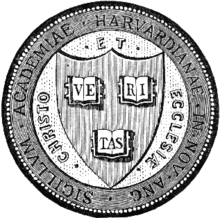
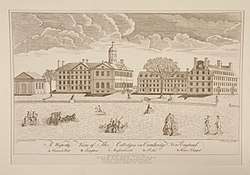
Harvard was established in 1636 by vote of the Great and General Court of the Massachusetts Bay Colony. In 1638, it acquired British North America's first known printing press.[25][26] In 1639, it was named Harvard College after deceased clergyman John Harvard, an alumnus of the University of Cambridge who had left the school £779 and his library of some 400 volumes.[27] The charter creating the Harvard Corporation was granted in 1650.
A 1643 publication gave the school's purpose as "to advance learning and perpetuate it to posterity, dreading to leave an illiterate ministry to the churches when our present ministers shall lie in the dust."[28] It trained many Puritan ministers in its early years[29] and offered a classic curriculum based on the English university model—many leaders in the colony had attended the University of Cambridge—but conformed to the tenets of Puritanism. Harvard has never affiliated with any particular denomination, though many of its earliest graduates went on to become clergymen in Congregational and Unitarian churches.[30]
Increase Mather served as president from 1681 to 1701. In 1708, John Leverett became the first president who was not also a clergyman, marking a turning of the college away from Puritanism and toward intellectual independence.[31]
19th century

In the 19th century, Enlightenment ideas of reason and free will were widespread among Congregational ministers, putting those ministers and their congregations in tension with more traditionalist, Calvinist parties.[32]:1–4 When Hollis Professor of Divinity David Tappan died in 1803 and President Joseph Willard died a year later, a struggle broke out over their replacements. Henry Ware was elected to the Hollis chair in 1805, and the liberal Samuel Webber was appointed to the presidency two years later, signaling the shift from the dominance of traditional ideas at Harvard to the dominance of liberal, Arminian ideas.[32]:4–5[33]:24
Charles William Eliot, president 1869–1909, eliminated the favored position of Christianity from the curriculum while opening it to student self-direction. Though Eliot was the crucial figure in the secularization of American higher education, he was motivated not by a desire to secularize education but by Transcendentalist Unitarian convictions influenced by William Ellery Channing and Ralph Waldo Emerson.[34]
20th century
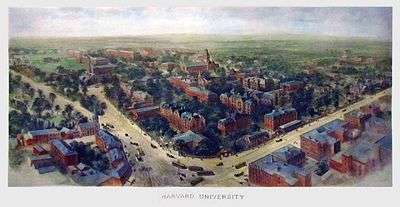
In the 20th century, Harvard's reputation grew as a burgeoning endowment and prominent professors expanded the university's scope. Rapid enrollment growth continued as new graduate schools were begun and the undergraduate college expanded. Radcliffe College, established in 1879 as the female counterpart of Harvard College, became one of the most prominent schools for women in the United States. Harvard became a founding member of the Association of American Universities in 1900.[10]
The student body in the early decades of the century was predominantly "old-stock, high-status Protestants, especially Episcopalians, Congregationalists, and Presbyterians." A 1923 proposal by President A. Lawrence Lowell that Jews be limited to 15% of undergraduates was rejected, but Lowell did ban blacks from freshman dormitories.[36][37][38][39]
President James B. Conant reinvigorated creative scholarship to guarantee Harvard's preeminence among research institutions. He saw higher education as a vehicle of opportunity for the talented rather than an entitlement for the wealthy, so Conant devised programs to identify, recruit, and support talented youth. In 1943, he asked the faculty to make a definitive statement about what general education ought to be, at the secondary as well as at the college level. The resulting Report, published in 1945, was one of the most influential manifestos in 20th century American education.[40]
Between 1945 and 1960, admissions were opened up to bring in a more diverse group of students. No longer drawing mostly from select New England prep schools, the undergraduate college became accessible to striving middle class students from public schools; many more Jews and Catholics were admitted, but few blacks, Hispanics, or Asians.[41] Throughout the rest of the 20th century, Harvard became more diverse.[42]
Harvard's graduate schools began admitting women in small numbers in the late 19th century. During World War II, students at Radcliffe College (which since 1879 had been paying Harvard professors to repeat their lectures for women) began attending Harvard classes alongside men.[43] Women were first admitted to the medical school in 1945.[44] Since 1971, Harvard has controlled essentially all aspects of undergraduate admission, instruction, and housing for Radcliffe women. In 1999, Radcliffe was formally merged into Harvard.[45]
21st century
Drew Gilpin Faust, previously the dean of the Radcliffe Institute for Advanced Study, became Harvard's first woman president on July 1, 2007.[46] She was succeeded by Lawrence Bacow on July 1, 2018.[47]
Campuses
Cambridge
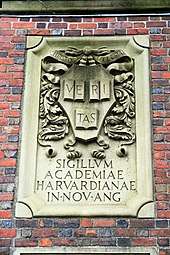
Harvard's 209-acre (85 ha) main campus is centered on Harvard Yard in Cambridge, about 3 miles (5 km) west-northwest of downtown Boston, and extends into the surrounding Harvard Square neighborhood. Harvard Yard itself contains key administrative offices such as University Hall and Massachusetts Hall; libraries such as Widener, Pusey, Houghton, and Lamont; Memorial Church; academic buildings such as Sever Hall and Harvard Hall; and most freshman dormitories. Sophomore, junior, and senior undergraduates live in twelve residential houses, nine of which are south of Harvard Yard along or near the Charles River. The other three are located in a residential neighborhood half a mile northwest of the Yard at the Quadrangle (commonly referred to as the "Quad") which housed Radcliffe College students until Radcliffe merged its residential system with Harvard. Each residential house is a community with undergraduates, faculty deans, and resident tutors, as well as a dining hall, library, and recreational spaces.[48] The houses were made possible by a gift from Yale University alumnus Edward Harkness.[49]
Radcliffe Yard, formerly the center of the campus of Radcliffe College and now home to Harvard's Radcliffe Institute for Advanced Study,[50] is adjacent to the Graduate School of Education and the Cambridge Common.
Harvard has several commercial real estate holdings in Cambridge.[51][52]
Allston
Harvard Business School, Harvard Innovation Labs, and many athletics facilities, including Harvard Stadium, are located on a 358-acre (145 ha) campus in Allston,[53] a Boston neighborhood just across the Charles River from the Cambridge campus. The John W. Weeks Bridge, a pedestrian bridge over the Charles River, connects the two campuses.
The university is actively expanding into Allston, where it now owns more land than in Cambridge.[54] Plans include new construction and renovation for the Business School, a hotel and conference center, graduate student housing, Harvard Stadium, and other athletics facilities.[55]
In 2021, the Harvard John A. Paulson School of Engineering and Applied Sciences will expand into a new, 500,000+ square foot Science and Engineering Complex (SEC) in Allston.[56] The SEC will be adjacent to the Enterprise Research Campus, the Business School, and the Harvard Innovation Labs to encourage technology- and life science-focused startups as well as collaborations with mature companies.[57]
Longwood
The Medical School, School of Dental Medicine, and the School of Public Health are located on a 21-acre (8.5 ha) campus in the Longwood Medical and Academic Area in Boston about 3.3 miles (5.3 km) south of the Cambridge campus.[12] Several Harvard-affiliated hospitals and research institutes are also in Longwood, including Beth Israel Deaconess Medical Center, Boston Children's Hospital, Brigham and Women's Hospital, Dana–Farber Cancer Institute, Joslin Diabetes Center, and the Wyss Institute for Biologically Inspired Engineering. Additional affiliates, most notably Massachusetts General Hospital, are located throughout the Greater Boston area.
Other
Harvard also owns the Dumbarton Oaks Research Library and Collection in Washington, D.C., the Harvard Forest in Petersham, Massachusetts, the Concord Field Station in Estabrook Woods in Concord, Massachusetts,[58] the Villa I Tatti research center in Florence, Italy,[59] the Harvard Shanghai Center in Shanghai, China,[60] and the Arnold Arboretum in the Jamaica Plain neighborhood of Boston.
Organization and administration
Governance
| School | Founded |
| Harvard College | 1636 |
| Medicine | 1782 |
| Divinity | 1816 |
| Law | 1817 |
| Dental Medicine | 1867 |
| Arts and Sciences | 1872 |
| Business | 1908 |
| Extension | 1910 |
| Design | 1914 |
| Education | 1920 |
| Public Health | 1922 |
| Government | 1936 |
| Engineering and Applied Sciences | 2007 |
Harvard is governed by a combination of its Board of Overseers and the President and Fellows of Harvard College (also known as the Harvard Corporation), which in turn appoints the President of Harvard University.[61] There are 16,000 staff and faculty,[62] including 2,400 professors, lecturers, and instructors.[63]
The Faculty of Arts and Sciences is the largest Harvard faculty and has primary responsibility for instruction in Harvard College, the Graduate School of Arts and Sciences, and the Division of Continuing Education, which includes Harvard Summer School and Harvard Extension School. There are nine other graduate and professional faculties as well as the Radcliffe Institute for Advanced Study.
Joint programs with the Massachusetts Institute of Technology include the Harvard–MIT Program in Health Sciences and Technology, the Broad Institute, The Observatory of Economic Complexity, and edX.
Endowment
Harvard has the largest university endowment in the world, valued at about $40.9 billion as of 2019.[3] During the recession of 2007–2009, it suffered significant losses that forced large budget cuts, in particular temporarily halting construction on the Allston Science Complex.[64] The endowment has since recovered.[65][66][67][68][69]
About $2 billion of investment income is annually distributed to fund operations.[70] Harvard's ability to fund its degree and financial aid programs depends on the performance of its endowment; a poor performance in fiscal year 2016 forced a 4.4% cut in the number of graduate students funded by the Faculty of Arts and Sciences.[71] Endowment income is critical, as only 22% of revenue is from students' tuition, fees, room, and board.[72]
Divestment
Since the 1970s, several student-led campaigns have advocated divesting Harvard's endowment from controversial holdings, including investments in apartheid South Africa, Sudan during the Darfur genocide, and the tobacco, fossil fuel, and private prison industries.[73][74]
In the late 1980s, during the divestment from South Africa movement, student activists erected a symbolic "shantytown" on Harvard Yard and blockaded a speech by South African Vice Consul Duke Kent-Brown.[75][76] The university eventually reduced its South African holdings by $230 million (out of $400 million) in response to the pressure.[75][77]
Academics
Teaching and learning
Harvard is a large, highly residential research university[79] offering 50 undergraduate majors,[80] 134 graduate degrees,[81] and 32 professional degrees.[82] For the 2018–2019 academic year, Harvard granted 1,665 baccalaureate degrees, 1,013 graduate degrees, and 5,695 professional degrees.[82]
The four-year, full-time undergraduate program has a liberal arts and sciences focus.[79][80] To graduate in the usual four years, undergraduates normally take four courses per semester.[83] In most majors, an honors degree requires advanced coursework and a senior thesis.[84] Though some introductory courses have large enrollments, the median class size is 12 students.[85]
Research
Harvard is a founding member of the Association of American Universities[86] and a preeminent research university with "very high" research activity (R1) and comprehensive doctoral programs across the arts, sciences, engineering, and medicine according to the Carnegie Classification.[79]
With the medical school consistently ranking first among medical schools for research,[87] biomedical research is an area of particular strength for the university. More than 11,000 faculty members and over 1,600 medical and graduate students contribute to discovery and innovation at the medical school as well as its 15 affiliated hospitals and research institutes.[88] The Medical School and its affiliates attracted $1.65 billion in competitive research grants from the National Institutes of Health in 2019, more than twice as much as any other university.[89]
Research opportunities are available to undergraduates as well, as early as their freshman year.[90] Numerous mechanisms for funding and faculty mentorship are available during both term-time and the summer.[90]
Libraries and museums
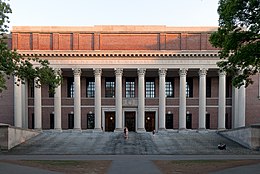
The Harvard Library system is centered in Widener Library in Harvard Yard and comprises nearly 80 individual libraries holding about 20.4 million items.[14][15][17] According to the American Library Association, this makes it the largest academic library in the world.[15][4]
Houghton Library, the Arthur and Elizabeth Schlesinger Library on the History of Women in America, and the Harvard University Archives consist principally of rare and unique materials. America's oldest collection of maps, gazetteers, and atlases both old and new is stored in Pusey Library and open to the public. The largest collection of East-Asian language material outside of East Asia is held in the Harvard-Yenching Library.
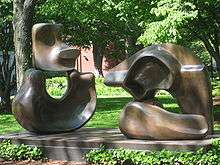
The Harvard Art Museums comprise three museums. The Arthur M. Sackler Museum covers Asian, Mediterranean, and Islamic art, the Busch–Reisinger Museum (formerly the Germanic Museum) covers central and northern European art, and the Fogg Museum covers Western art from the Middle Ages to the present emphasizing Italian early Renaissance, British pre-Raphaelite, and 19th-century French art. The Harvard Museum of Natural History includes the Harvard Mineralogical Museum, the Harvard University Herbaria featuring the Blaschka Glass Flowers exhibit, and the Museum of Comparative Zoology. Other museums include the Carpenter Center for the Visual Arts, designed by Le Corbusier and housing the film archive, the Peabody Museum of Archaeology and Ethnology, specializing in the cultural history and civilizations of the Western Hemisphere, and the Harvard Museum of the Ancient Near East featuring artifacts from excavations in the Middle East.
Reputation and rankings
| University rankings | |
|---|---|
| National | |
| ARWU[91] | 1 |
| Forbes[92] | 1 |
| THE/WSJ[93] | 1 |
| U.S. News & World Report[94] | 2 |
| Washington Monthly[95] | 2 |
| Global | |
| ARWU[96] | 1 |
| QS[97] | 3 |
| THE[98] | 7 |
| U.S. News & World Report[99] | 1 |
| National Graduate Rankings[100] | |||
|---|---|---|---|
| Program | Ranking | ||
| Biological Sciences | 4 | ||
| Business | 6 | ||
| Chemistry | 2 | ||
| Clinical Psychology | 10 | ||
| Computer Science | 16 | ||
| Earth Sciences | 8 | ||
| Economics | 1 | ||
| Education | 1 | ||
| Engineering | 22 | ||
| English | 8 | ||
| History | 4 | ||
| Law | 3 | ||
| Mathematics | 2 | ||
| Medicine: Primary Care | 10 | ||
| Medicine: Research | 1 | ||
| Physics | 3 | ||
| Political Science | 1 | ||
| Psychology | 3 | ||
| Public Affairs | 3 | ||
| Public Health | 2 | ||
| Sociology | 1 | ||
| Global Subject Rankings[101] | |||
|---|---|---|---|
| Program | Ranking | ||
| Agricultural Sciences | 22 | ||
| Arts & Humanities | 2 | ||
| Biology & Biochemistry | 1 | ||
| Cardiac & Cardiovascular Systems | 1 | ||
| Chemistry | 15 | ||
| Clinical Medicine | 1 | ||
| Computer Science | 47 | ||
| Economics & Business | 1 | ||
| Electrical & Electronic Engineering | 136 | ||
| Engineering | 27 | ||
| Environment/Ecology | 5 | ||
| Geosciences | 7 | ||
| Immunology | 1 | ||
| Materials Science | 7 | ||
| Mathematics | 12 | ||
| Microbiology | 1 | ||
| Molecular Biology & Genetics | 1 | ||
| Neuroscience & Behavior | 1 | ||
| Oncology | 1 | ||
| Pharmacology & Toxicology | 1 | ||
| Physics | 4 | ||
| Plant & Animal Science | 13 | ||
| Psychiatry/Psychology | 1 | ||
| Social Sciences & Public Health | 1 | ||
| Space Science | 2 | ||
| Surgery | 1 | ||
Among overall rankings, the Academic Ranking of World Universities (ARWU) has ranked Harvard as the world's top university every year since it was released.[102] When QS and Times Higher Education collaborated to publish the Times Higher Education–QS World University Rankings from 2004 to 2009, Harvard held the top spot every year and continued to hold first place on THE World Reputation Rankings ever since it was released in 2011.[103] In 2019, it was ranked first worldwide by SCImago Institutions Rankings.[104]
Among rankings of specific indicators, Harvard topped both the University Ranking by Academic Performance (2019–2020) and Mines ParisTech: Professional Ranking of World Universities (2011), which measured universities' numbers of alumni holding CEO positions in Fortune Global 500 companies.[105] According to annual polls done by The Princeton Review, Harvard is consistently among the top two most commonly named "dream colleges" in the United States, both for students and parents.[106][107][108] Additionally, having made significant investments in its engineering school in recent years, Harvard was ranked third worldwide for Engineering and Technology in 2019 by Times Higher Education.[109]
Student life
| Undergrad | Grad/prof | |
|---|---|---|
| Asian | 21% | 13% |
| Black | 9% | 5% |
| Hispanic or Latino | 11% | 7% |
| White | 37% | 38% |
| Two or more races | 8% | 3% |
| International | 12% | 32% |
Student government
The Harvard Undergraduate Council and the Harvard Graduate Council are the chief organs of student government.
Athletics
The Harvard Crimson fields 42 intercollegiate sports teams in the NCAA Division I Ivy League, more than any other college in the country.[111] Every two years, the Harvard and Yale track and field teams come together to compete against a combined Oxford and Cambridge team in the oldest continuous international amateur competition in the world.[112] As with other Ivy League universities, Harvard does not offer athletic scholarships.[113] The school color is crimson.
Harvard's athletic rivalry with Yale is intense in every sport in which they meet, coming to a climax each fall in the annual football meeting, which dates back to 1875.
Notable people
Alumni
%2C_2nd_president_of_the_United_States%2C_by_Asher_B._Durand_(1767-1845)-crop.jpg)
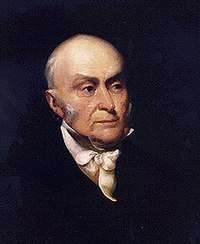
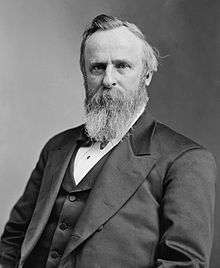 19th President of the United States Rutherford B. Hayes (LLB, 1845)
19th President of the United States Rutherford B. Hayes (LLB, 1845)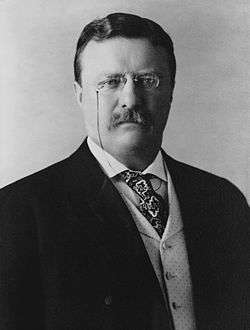 26th President of the United States and Nobel Peace Prize laureate Theodore Roosevelt (AB, 1880)
26th President of the United States and Nobel Peace Prize laureate Theodore Roosevelt (AB, 1880)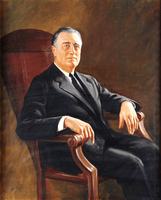 32nd President of the United States Franklin D. Roosevelt (AB, 1903)
32nd President of the United States Franklin D. Roosevelt (AB, 1903) American author, political activist, and lecturer Helen Keller (AB, 1904, Radcliffe College)
American author, political activist, and lecturer Helen Keller (AB, 1904, Radcliffe College)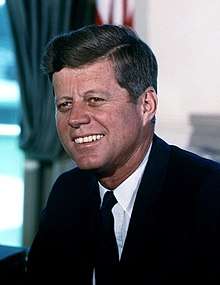 35th President of the United States John F. Kennedy (AB, 1940)
35th President of the United States John F. Kennedy (AB, 1940)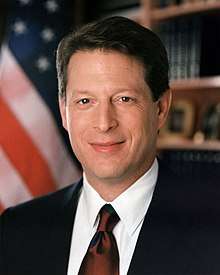 45th Vice President of the United States and Nobel Peace Prize laureate Al Gore (AB, 1969)
45th Vice President of the United States and Nobel Peace Prize laureate Al Gore (AB, 1969)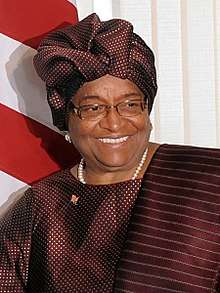 24th President of Liberia and Nobel Peace Prize laureate Ellen Johnson Sirleaf (MPA, 1971)
24th President of Liberia and Nobel Peace Prize laureate Ellen Johnson Sirleaf (MPA, 1971)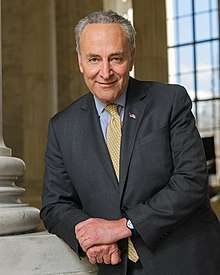
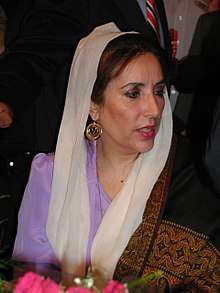 11th Prime Minister of Pakistan Benazir Bhutto (AB, 1973, Radcliffe College)
11th Prime Minister of Pakistan Benazir Bhutto (AB, 1973, Radcliffe College)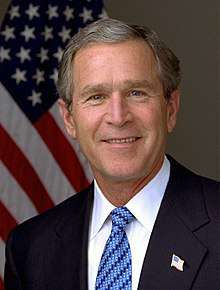 43rd President of the United States George W. Bush (MBA, 1975)
43rd President of the United States George W. Bush (MBA, 1975)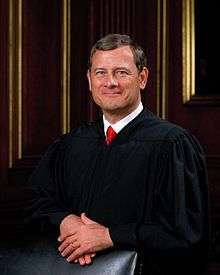
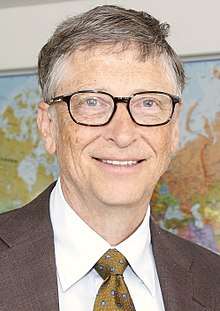
 Former Secretary-General of the United Nations Ban Ki-moon (MPA, 1984)
Former Secretary-General of the United Nations Ban Ki-moon (MPA, 1984)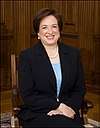 Associate Justice of the Supreme Court of the United States Elena Kagan (JD, 1986)
Associate Justice of the Supreme Court of the United States Elena Kagan (JD, 1986)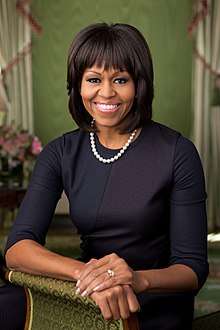 Former First Lady of the United States Michelle Obama (JD, 1988)
Former First Lady of the United States Michelle Obama (JD, 1988)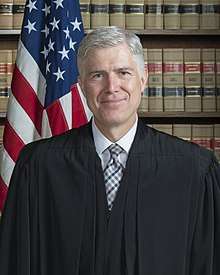 Associate Justice of the Supreme Court of the United States Neil Gorsuch (JD, 1991)
Associate Justice of the Supreme Court of the United States Neil Gorsuch (JD, 1991)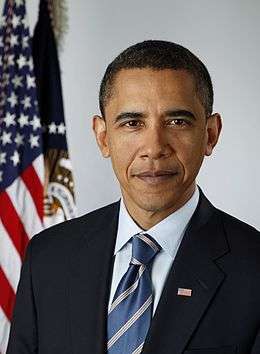 44th President of the United States and Nobel Peace Prize laureate Barack Obama (JD, 1991)
44th President of the United States and Nobel Peace Prize laureate Barack Obama (JD, 1991)
- Nominal class year: dropped out without degree
Faculty
Harvard's faculty includes numerous renowned scholars such as biologists E. O. Wilson and William Kaelin Jr.; biophysicists Adam Cohen and Xiaowei Zhuang; physicists Lisa Randall, Subir Sachdev, and Howard Georgi; astrophysicists Alyssa A. Goodman and John M. Kovac; mathematicians Shing-Tung Yau and Joe Harris; computer scientists Michael O. Rabin and Leslie Valiant; chemists Elias James Corey, Dudley R. Herschbach, and George M. Whitesides; literary critics Helen Vendler, Stephen Greenblatt, Louis Menand, and Stephanie Burt; composers Robert Levin and Bernard Rands; lawyers Alan Dershowitz and Lawrence Lessig; historian Henry Louis Gates Jr.; psychologists Steven Pinker and Daniel Gilbert; economists Amartya Sen, Greg Mankiw, Robert Barro, Stephen Marglin, Jason Furman, Michael Kremer, Oliver Hart, Raj Chetty, Lawrence Summers, Eric Maskin, David Laibson, Andrei Shleifer, and Matthew Rabin; philosophers Harvey Mansfield, Shirley Williams, Cornel West, and Michael J. Sandel; and political scientists Robert Putnam, Steven Levitsky, Danielle Allen, and Joseph Nye.
Past faculty members include Stephen Jay Gould, Robert Nozick, Stephan Thernstrom, Sanford J. Ungar, Michael Walzer, Martin Feldstein, Roy Glauber, and Stanley Hoffmann.
Literature and popular culture
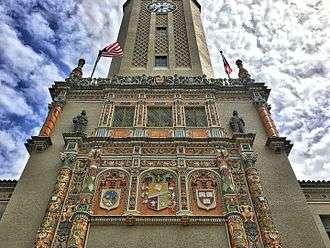
The perception of Harvard as a center of either elite achievement, or elitist privilege, has made it a frequent literary and cinematic backdrop. "In the grammar of film, Harvard has come to mean both tradition, and a certain amount of stuffiness," film critic Paul Sherman has said.[114]
Literature
- The Sound and the Fury (1929) and Absalom! Absalom! (1936) by William Faulkner both depict Harvard student life.
- Of Time and the River (1935) by Thomas Wolfe is a fictionalized autobiography that includes his alter ego's time at Harvard.
- The Late George Apley (1937) by John P. Marquand parodies Harvard men at the opening of the 20th century; it won the Pulitzer Prize.
- The Second Happiest Day (1953) by John P. Marquand Jr. portrays the Harvard of the World War II generation.[115][116][117][118][119]
Film
Harvard's policy since 1970 has been to permit filming on its property only rarely, so most scenes set at Harvard (especially indoor shots, but excepting aerial footage and shots of public areas such as Harvard Square) are in fact shot elsewhere.[120]
- Love Story (1970) concerns a romance between a wealthy Harvard hockey player (Ryan O'Neal) and a brilliant Radcliffe student of modest means (Ali MacGraw): it is screened annually for incoming freshmen.[121][122][123]
- The Paper Chase (1973)[124]
See also
- 2012 Harvard cheating scandal
- Academic regalia of Harvard University
- Gore Hall
- Harvard College social clubs
- Harvard University Police Department
- Harvard University Press
- Harvard/MIT Cooperative Society
- I, Too, Am Harvard
- List of oldest universities in continuous operation
- List of Nobel laureates affiliated with Harvard University
- Outline of Harvard University
- Secret Court of 1920
References
- An appropriation of £400 toward a "school or college" was voted on October 28, 1636 (OS), at a meeting which convened on September 8 and was adjourned to October 28. Some sources consider October 28, 1636 (OS) (November 7, 1636 NS) to be the date of founding. Harvard's 1936 tercentenary celebration treated September 18 as the founding date, though 1836 bicentennial was celebrated on September 8, 1836. Sources: meeting dates, Quincy, Josiah (1860). History of Harvard University. 117 Washington Street, Boston: Crosby, Nichols, Lee and Co.CS1 maint: location (link), p. 586, "At a Court holden September 8th, 1636 and continued by adjournment to the 28th of the 8th month (October, 1636)... the Court agreed to give £400 towards a School or College, whereof £200 to be paid next year...." Tercentenary dates: "Cambridge Birthday". Time. September 28, 1936. Archived from the original on December 5, 2012. Retrieved September 8, 2006.: "Harvard claims birth on the day the Massachusetts Great and General Court convened to authorize its founding. This was Sept. 8, 1637 under the Julian calendar. Allowing for the ten-day advance of the Gregorian calendar, Tercentenary officials arrived at Sept. 18 as the date for the third and last big Day of the celebration;" "on Oct. 28, 1636 ... £400 for that 'school or college' [was voted by] the Great and General Court of the Massachusetts Bay Colony." Bicentennial date: Marvin Hightower (September 2, 2003). "Harvard Gazette: This Month in Harvard History". Harvard University. Archived from the original on September 8, 2006. Retrieved September 15, 2006., "Sept. 8, 1836 – Some 1,100 to 1,300 alumni flock to Harvard's Bicentennial, at which a professional choir premieres "Fair Harvard." ... guest speaker Josiah Quincy Jr., Class of 1821, makes a motion, unanimously adopted, 'that this assembly of the Alumni be adjourned to meet at this place on September 8, 1936.'" Tercentary opening of Quincy's sealed package: The New York Times, September 9, 1936, p. 24, "Package Sealed in 1836 Opened at Harvard. It Held Letters Written at Bicentenary": "September 8th, 1936: As the first formal function in the celebration of Harvard's tercentenary, the Harvard Alumni Association witnessed the opening by President Conant of the 'mysterious' package sealed by President Josiah Quincy at the Harvard bicentennial in 1836."
- Zhang, Cindy. "Harvard Endowment Returns 6.5 Percent for Fiscal Year 2019". The Harvard Crimson. Retrieved March 26, 2020.
- "Harvard at a Glance". Harvard University. Retrieved December 26, 2019.
- "Common Data Set 2019-2020" (PDF). Office of Institutional Research. Harvard University. Retrieved June 23, 2020.
- Rudolph, Frederick (1961). The American College and University. University of Georgia Press. p. 3. ISBN 0-8203-1285-1.
-
- Keller, Morton; Keller, Phyllis (2001). Making Harvard Modern: The Rise of America's University. Oxford University Press. pp. 463–481. ISBN 0-19-514457-0.
Harvard's professional schools... won world prestige of a sort rarely seen among social institutions. [...] Harvard's age, wealth, quality, and prestige may well shield it from any conceivable vicissitudes.
- Spaulding, Christina (1989). "Sexual Shakedown". In Trumpbour, John (ed.). How Harvard Rules: Reason in the Service of Empire. South End Press. pp. 326–336. ISBN 0-89608-284-9.
... [Harvard's] tremendous institutional power and prestige [...] Within the nation's (arguably) most prestigious institution of higher learning ...
- David Altaner (March 9, 2011). "Harvard, MIT Ranked Most Prestigious Universities, Study Reports". Bloomberg. Retrieved March 1, 2012.
- Collier's Encyclopedia. Macmillan Educational Co. 1986.
Harvard University, one of the world's most prestigious institutions of higher learning, was founded in Massachusetts in 1636.
- Newport, Frank. "Harvard Number One University in Eyes of Public Stanford and Yale in second place". Gallup.
- Leonhardt, David (September 17, 2006). "Ending Early Admissions: Guess Who Wins?". The New York Times. ISSN 0362-4331. Retrieved March 27, 2020.
The most prestigious college in the world, of course, is Harvard, and the gap between it and every other university is often underestimated.
- Hoerr, John (1997). We Can't Eat Prestige: The Women Who Organized Harvard. Temple University Press. p. 3.
- Wong, Alia (September 11, 2018). "At Private Colleges, Students Pay for Prestige". The Atlantic.
Americans tend to think of colleges as falling somewhere on a vast hierarchy based largely on their status and brand recognition. At the top are the Harvards and the Stanfords, with their celebrated faculty, groundbreaking research, and perfectly manicured quads.
- Keller, Morton; Keller, Phyllis (2001). Making Harvard Modern: The Rise of America's University. Oxford University Press. pp. 463–481. ISBN 0-19-514457-0.
- Story, Ronald (1975). "Harvard and the Boston Brahmins: A Study in Institutional and Class Development, 1800–1865". Journal of Social History. 8 (3): 94–121. doi:10.1353/jsh/8.3.94.
- Farrell, Betty G. (1993). Elite Families: Class and Power in Nineteenth-Century Boston. State University of New York Press. ISBN 0-7914-1593-7.
- "Member Institutions and years of Admission". Association of American Universities. Retrieved August 28, 2010.
- "Faculties and Allied Institutions" (PDF). Office of the Provost, Harvard University. Archived from the original (PDF) on June 11, 2010. Retrieved August 27, 2010.
- "Faculties and Allied Institutions" (PDF). Office of the Provost, Harvard University. 2012. Archived from the original (PDF) on May 23, 2013. Retrieved June 15, 2013.
- Kurt, Daniel. "What Harvard Actually Costs". Investopedia. Retrieved July 30, 2020.
- "Harvard Library Annual Report FY 2013". Harvard University Library. 2013. Archived from the original on June 9, 2016. Retrieved January 3, 2015.
- "The Nation's Largest Libraries: A Listing By Volumes Held". American Library Association. May 2009. Retrieved August 19, 2009.
- "Speaking Volumes". Harvard Gazette. The President and Fellows of Harvard College. February 26, 1998. Archived from the original on September 9, 1999.
- Harvard Media Relations. "Quick Facts". Retrieved December 12, 2019.
- "Five Harvard students named Rhodes Scholars". The Harvard Gazette. Retrieved November 24, 2019.
- Kathleen Elkins (May 18, 2018). "More billionaires went to Harvard than to Stanford, MIT and Yale combined". CNBC. Retrieved October 1, 2019.
- "Statistics". www.marshallscholarship.org.
- "The complete list of Fields Medal winners". areppim AG. 2014. Retrieved September 10, 2015.
- "Pulitzer Prize Winners". Harvard University. Retrieved February 2, 2018.
- "Harvard Olympians". gocrimson.com. Retrieved February 2, 2018.
- "Companies - Entrepreneurship - Harvard Business School". entrepreneurship.hbs.edu. Retrieved March 28, 2019.
- "The instrument behind New England's first literary flowering". Harvard University. Retrieved January 18, 2014.
- "Rowley and Ezekiel Rogers, The First North American Printing Press" (PDF). Maritime Historical Studies Centre, University of Hull. Retrieved January 18, 2014.
- "John Harvard Facts, Information". The Columbia Encyclopedia, Sixth Edition. 2008. Retrieved July 17, 2009.
He bequeathed £780 (half his estate) and his library of 320 volumes to the new established college at Cambridge, Mass., which was named in his honor.
- Wright, Louis B. (2002). The Cultural Life of the American Colonies. p. 116. ISBN 978-0-486-42223-7.
- Grigg, John A.; Mancall, Peter C. (2008). British Colonial America: People and Perspectives. ABC-CLIO. p. 47. ISBN 978-1-59884-025-4.
- Harvard Office of News and Public Affairs (July 26, 2007). "Harvard guide intro". Harvard University. Archived from the original on July 26, 2007. Retrieved August 29, 2010.
- John Leverett - History - Office of the President Archived June 12, 2010, at the Wayback Machine
- Gary J. Dorrien. The Making of American Liberal Theology: Imagining Progressive Religion, 1805–1900, Volume 1. Westminster John Knox Press, 2001
- Peter S. Field Ralph Waldo Emerson: The Making of a Democratic Intellectual Rowman & Littlefield, 2003 ISBN 978-0847688425
- Shoemaker, Stephen P. (2006–2007). "The Theological Roots of Charles W. Eliot's Educational Reforms". Journal of Unitarian Universalist History. 31: 30–45.
- "Arader Galleries Iconic College Views", Rummell, Richard, Littig & Co. 1915
- Jerome Karabel (2006). The Chosen: The Hidden History of Admission and Exclusion at Harvard, Yale, and Princeton. p. 23. ISBN 9780618773558.
- Steinberg, Stephen (September 1, 1971). "How Jewish Quotas Began". Commentary. Retrieved September 10, 2017.
- Johnson, Dirk (March 4, 1986). "YALE'S LIMIT ON JEWISH ENROLLMENT LASTED UNTIL EARLY 1960'S, BOOK SAYS". The New York Times.
- "Lowell Tells Jews Limits at Colleges Might Help Them". The New York Times. June 17, 1922.
- Anita Fay Kravitz, "The Harvard Report of 1945: An historical ethnography", Ph.D. dissertation, University of Pennsylvania, 1994, 367 pages; AAT 9427558
- Malka A. Older. (1996). Preparatory schools and the admissions process. The Harvard Crimson, January 24, 1996
- Powell, Alvin (October 1, 2018). "An update on Harvard's diversity, inclusion efforts". The Harvard Gazette.
- Schwager, Sally (2004). "Taking up the Challenge: The Origins of Radcliffe". In Laurel Thatcher Ulrich (ed.). Yards and Gates: Gender in Harvard and Radcliffe History. New York: Palgrave Macmillan. p. 115. ISBN 1-4039-6098-4.
- First class of women admitted to Harvard Medical School, 1945 (Report). Countway Repository, Harvard University Library. Retrieved May 2, 2016.
- Radcliffe Enters Historic Merger With Harvard (Report). Retrieved May 6, 2016.
- Associated Press (February 11, 2007). "Harvard Board Names First Woman President". NBC News. Retrieved August 8, 2015. Cite journal requires
|journal=(help) - "Harvard University names Lawrence Bacow its 29th president". Fox News. February 11, 2018. Retrieved February 15, 2018.
- "The Houses". Harvard College Dean of Students Office. Retrieved December 13, 2019.
- "History of Harkness: The Men Behind the Plan" (PDF).
- Radcliffe Institute for Advanced Study at Harvard. Radcliffe Institute for Advanced Study at Harvard. President and Fellows of Harvard College. 2016. Retrieved October 10, 2016
- "Institutional Ownership Map – Cambridge Massachusetts" (PDF).
- "Harvard Purchases Doubletree Hotel Building – News – The Harvard Crimson". www.thecrimson.com.
- Harvard continues its march into Allston, with science complex Tim Logan. Boston Globe. April 14, 2016. Retrieved September 30, 2016
- "Allston Planning and Development / Office of the Executive Vice President". Harvard University. Retrieved September 7, 2016.
- Harvard unveils big campus expansion Svea Herbst-Bayliss. Reuters. January 12, 2007. Retrieved September 30, 2016
- O'Rourke, Brigid. "SEAS moves opening of Science and Engineering Complex to spring semester '21". The Harvard Gazette. Retrieved May 14, 2020.
- "Our Campus". Retrieved December 20, 2019.
- "Concord Field Station". mcz.harvard.edu. Harvard University. Retrieved March 4, 2017.
- "Villa I Tatti: The Harvard University Center for Italian Renaissance Studies". Itatti.it. Retrieved June 30, 2010.
- "Shanghai Center". Harvard.edu.
- Bethell, John T.; Hunt, Richard M.; Shenton, Robert (2009). Harvard A to Z. Harvard University Press. pp. 166–. ISBN 978-0-674-02089-4.
- Burlington Free Press, June 24, 2009, page 11B, ""Harvard to cut 275 jobs" Associated Press
- Office of Institutional Research (2009). Harvard University Fact Book 2009–2010 (PDF). Archived from the original (PDF) on July 23, 2011. ("Faculty")
- Vidya B. Viswanathan and Peter F. Zhu (March 5, 2009). "Residents Protest Vacancies in Allston". Harvard Crimson. Retrieved February 10, 2011.
- "Harvard Endowment Rises $4.4 Billion to $32 Billion". Harvard Magazine. Vol. November–December. 2011. Retrieved December 13, 2011.
- Beth Healy (January 28, 2010). "Harvard endowment leads others down". The Boston Globe. Retrieved September 2, 2010.
- Hechinger, John (December 4, 2008). "Harvard Hit by Loss as Crisis Spreads to Colleges". Wall Street Journal. p. A1.
- Munk, Nina (August 2009). "Nina Munk on Hard Times at Harvard". Vanity Fair. Retrieved August 29, 2010.
- Andrew M. Rosenfield (March 4, 2009). "Understanding Endowments, Part I". Forbes. Retrieved August 29, 2010.
- "A Singular Mission". Retrieved December 14, 2019.
- "Admissions Cuts Concern Some Graduate Students". Retrieved December 14, 2019.
- "Financial Report" (PDF). Retrieved December 14, 2019.
- Alli Welton (November 20, 2012). "Harvard Students Vote 72 Percent Support for Fossil Fuel Divestment". The Nation. Retrieved July 27, 2015.
- Chaidez, Alexandra A. (October 22, 2019). "Harvard Prison Divestment Campaign Delivers Report to Mass. Hall". The Harvard Crimson. Retrieved December 15, 2019.
- Michael C. George; David W. Kaufman (May 23, 2012). "Students Protest Investment in Apartheid South Africa". The Harvard Crimson. Retrieved July 27, 2015.
- Anjali Cadambi (September 19, 2010). "Harvard University community campaigns for divestment from apartheid South Africa, 1977–1989". Global Nonviolent Action Database. Retrieved July 27, 2015.
- Robert Anthony Waters Jr. (March 20, 2009). Historical Dictionary of United States-Africa Relations. Scarecrow Press. p. 77. ISBN 978-0-8108-6291-3.
- Harvard College. "A Brief History of Harvard College". Harvard College. Archived from the original on April 24, 2011. Retrieved July 25, 2011.
- "Carnegie Classifications – Harvard University". The Carnegie Foundation for the Advancement of Teaching. Retrieved August 28, 2010.
- "Liberal Arts & Sciences". Harvard College. Retrieved December 12, 2019.
- "Degree Programs" (PDF). Graduate School of Arts and Sciences Handbook. pp. 28–30. Archived from the original (PDF) on September 9, 2015. Retrieved August 28, 2010.
- "Degrees Awarded". Office of Institutional Research, Harvard University. Retrieved December 13, 2019.
- "The Bachelor of Arts and Bachelor of Science Degrees". Harvard College. Retrieved December 8, 2019.
- "Academic Information: The Concentration Requirement". Handbook for Students. Harvard College. Archived from the original on December 5, 2010. Retrieved August 28, 2010.
- "How large are classes?". Harvard College. Retrieved December 14, 2019.
- "Member Institutions and Years of Admission". Association of American Universities. Archived from the original on October 28, 2012. Retrieved September 15, 2013.
- "Best Medical Schools: Research". U.S. News & World Report. Retrieved December 8, 2019.
- "Research at Harvard Medical School". Harvard Medical School. Retrieved December 9, 2019.
- "Which schools get the most research money?". U.S. News & World Report. Retrieved March 30, 2020.
- "Research". Harvard College. Retrieved December 8, 2019.
- "Academic Ranking of World Universities 2019: USA". Shanghai Ranking Consultancy. Retrieved August 16, 2019.
- "America's Top Colleges 2019". Forbes. Retrieved August 15, 2019.
- "U.S. College Rankings 2020". Wall Street Journal/Times Higher Education. Retrieved September 26, 2019.
- "Best Colleges 2020: National University Rankings". U.S. News & World Report. Retrieved September 8, 2019.
- "2019 National University Rankings". Washington Monthly. Retrieved August 20, 2019.
- "Academic Ranking of World Universities 2019". Shanghai Ranking Consultancy. 2019. Retrieved August 16, 2019.
- "QS World University Rankings® 2021". Quacquarelli Symonds Limited. 2020. Retrieved June 10, 2020.
- "World University Rankings 2020". THE Education Ltd. Retrieved September 14, 2019.
- "Best Global Universities Rankings: 2020". U.S. News & World Report LP. Retrieved October 22, 2019.
- "Harvard University's Graduate School Rankings". U.S. News & World Report. Retrieved April 27, 2020.
- "Harvard University – U.S. News Global University Rankings". U.S. News & World Report. Retrieved April 27, 2020.
- "Academic Ranking of World Universities——Harvard University Ranking Profile". Shanghai Ranking Consultancy. Retrieved July 29, 2018.
- "World Reputation Rankings 2016". Times Higher Education. 2016. Retrieved September 7, 2016.
- "SCImago Institutions Rankings - Higher Education - All Regions and Countries - 2019 - Overall Rank". www.scimagoir.com.
- "World Ranking". University Ranking by Academic Performance. Retrieved January 22, 2020.
- "College Hopes & Worries Press Release". PR Newswire. 2016. Retrieved September 7, 2016.
- "Princeton Review's 2012 "College Hopes & Worries Survey" Reports on 10,650 Students' & Parents' Top 10 "Dream Colleges" and Application Perspectives". PR Newswire. 2012. Retrieved December 10, 2019.
- "2019 College Hopes & Worries Press Release". 2019. Retrieved December 10, 2019.
- "Harvard is #3 in World University Engineering Rankings". 2019. Retrieved December 10, 2019.
- "Student Enrollment Data". Office of Institutional Research. Retrieved December 14, 2019.
- "Harvard : Women's Rugby Becomes 42nd Varsity Sport at Harvard University". Gocrimson.com. August 9, 2012. Retrieved July 5, 2013.
- "Yale and Harvard Defeat Oxford/Cambridge Team". Yale University Athletics. Archived from the original on October 13, 2011. Retrieved September 13, 2011.
- "The Harvard Guide: Financial Aid at Harvard". Harvard University. September 2, 2006. Archived from the original on September 2, 2006. Retrieved August 29, 2010.
- Thomas, Sarah (September 24, 2010). "'Social Network' taps other campuses for Harvard role". Boston.com.
'In the grammar of film, Harvard has come to mean both tradition, and a certain amount of stuffiness.... Someone from Missouri who has never lived in Boston ... can get this idea that it's all trust fund babies and ivy-covered walls.'
- King, Michael (2002). Wrestling with the Angel. p. 371.
...praised as an iconic chronicle of his generation and his WASP-ish class.
- Halberstam, Michael J. (February 18, 1953). "White Shoe and Weak Will". Harvard Crimson.
The book is written slickly, but without distinction.... The book will be quick, enjoyable reading for all Harvard men.
- Yardley, Jonathan (December 23, 2009). "Second Reading". The Washington Post.
'...a balanced and impressive novel...' [is] a judgment with which I [agree].
- Du Bois, William (February 1, 1953). "Out of a Jitter-and-Fritter World". The New York Times. p. BR5.
exhibits Mr. Phillips' talent at its finest
- "John Phillips, The Second Happiest Day". Southwest Review. 38. p. 267.
So when the critics say the author of "The Second Happiest Day" is a new Fitzgerald, we think they may be right.
- Schwartz, Nathaniel L. (September 21, 1999). "University, Hollywood Relationship Not Always a 'Love Story'". Harvard Crimson. Retrieved September 15, 2013.; Sarah Thomas (September 24, 2010). "'Social Network' taps other campuses for Harvard role". boston.com.
- "Never Having To Say You're Sorry for 25 Years..." Harvard Crimson. June 3, 1996. Retrieved September 15, 2013.
- Vinciguerra, Thomas (August 20, 2010). "The Disease: Fatal. The Treatment: Mockery". The New York Times.
- Gewertz, Ken (February 8, 1996). "A Many-Splendored 'Love Story'. Movie filmed at Harvard 25 years ago helped to define a generation". Harvard University Gazette.
- Walsh, Colleen (October 2, 2012). "The Paper Chase at 40". Harvard Gazette.
Bibliography
- Abelmann, Walter H., ed. The Harvard-MIT Division of Health Sciences and Technology: The First 25 Years, 1970–1995 (2004). 346 pp.
- Beecher, Henry K. and Altschule, Mark D. Medicine at Harvard: The First 300 Years (1977). 569 pp.
- Bentinck-Smith, William, ed. The Harvard Book: Selections from Three Centuries (2d ed.1982). 499 pp.
- Bethell, John T.; Hunt, Richard M.; and Shenton, Robert. Harvard A to Z (2004). 396 pp. excerpt and text search
- Bethell, John T. Harvard Observed: An Illustrated History of the University in the Twentieth Century, Harvard University Press, 1998, ISBN 0-674-37733-8
- Bunting, Bainbridge. Harvard: An Architectural History (1985). 350 pp.
- Carpenter, Kenneth E. The First 350 Years of the Harvard University Library: Description of an Exhibition (1986). 216 pp.
- Cuno, James et al. Harvard's Art Museums: 100 Years of Collecting (1996). 364 pp.
- Elliott, Clark A. and Rossiter, Margaret W., eds. Science at Harvard University: Historical Perspectives (1992). 380 pp.
- Hall, Max. Harvard University Press: A History (1986). 257 pp.
- Hay, Ida. Science in the Pleasure Ground: A History of the Arnold Arboretum (1995). 349 pp.
- Hoerr, John, We Can't Eat Prestige: The Women Who Organized Harvard; Temple University Press, 1997, ISBN 1-56639-535-6
- Howells, Dorothy Elia. A Century to Celebrate: Radcliffe College, 1879–1979 (1978). 152 pp.
- Keller, Morton, and Phyllis Keller. Making Harvard Modern: The Rise of America's University (2001), major history covers 1933 to 2002 online edition
- Lewis, Harry R. Excellence Without a Soul: How a Great University Forgot Education (2006) ISBN 1-58648-393-5
- Morison, Samuel Eliot. Three Centuries of Harvard, 1636–1936 (1986) 512pp; excerpt and text search
- Powell, Arthur G. The Uncertain Profession: Harvard and the Search for Educational Authority (1980). 341 pp.
- Reid, Robert. Year One: An Intimate Look inside Harvard Business School (1994). 331 pp.
- Rosovsky, Henry. The University: An Owner's Manual (1991). 312 pp.
- Rosovsky, Nitza. The Jewish Experience at Harvard and Radcliffe (1986). 108 pp.
- Seligman, Joel. The High Citadel: The Influence of Harvard Law School (1978). 262 pp.
- Sollors, Werner; Titcomb, Caldwell; and Underwood, Thomas A., eds. Blacks at Harvard: A Documentary History of African-American Experience at Harvard and Radcliffe (1993). 548 pp.
- Trumpbour, John, ed., How Harvard Rules. Reason in the Service of Empire, Boston: South End Press, 1989, ISBN 0-89608-283-0
- Ulrich, Laurel Thatcher, ed., Yards and Gates: Gender in Harvard and Radcliffe History, New York: Palgrave Macmillan, 2004. 337 pp.
- Winsor, Mary P. Reading the Shape of Nature: Comparative Zoology at the Agassiz Museum (1991). 324 pp.
- Wright, Conrad Edick. Revolutionary Generation: Harvard Men and the Consequences of Independence (2005). 298 pp.

